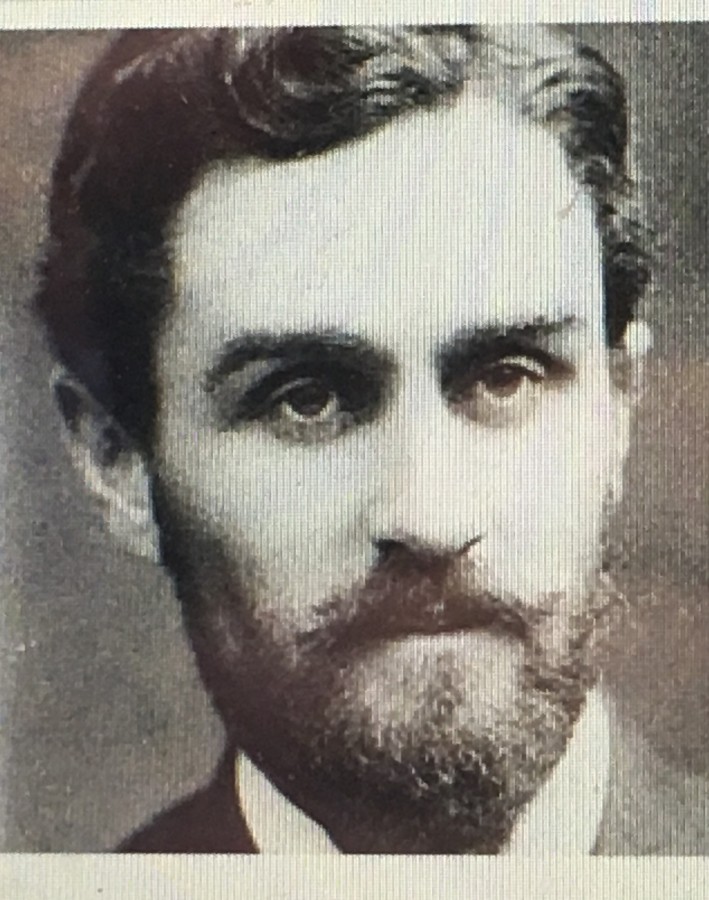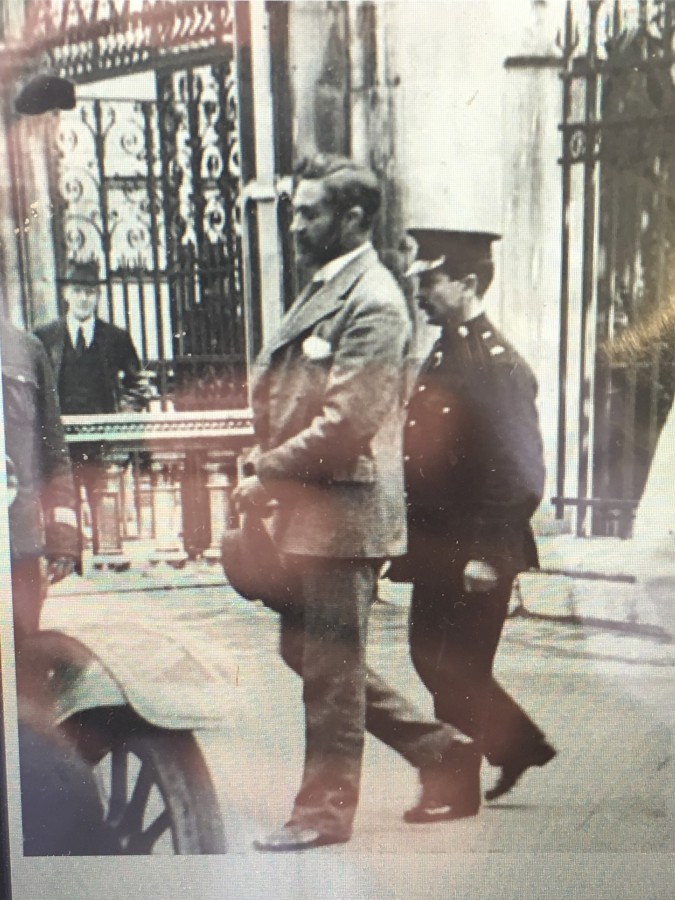
Kieran’s Our City, Our Town Article
Cork Independent, 4 August 2016
Remembering 1916: Roger Casement’s Execution
Roger Casement was executed in London on 3 August 1916. The following day 4 August, this day one hundred years ago, the newspapers of the day had ample coverage about the nature of his execution. He was the last of the executions of the leaders associated with the Easter Rising. It occurred amidst a backdrop of continuing martial law in Ireland and internments in British prisons. Casement remains a type of enigma in the study of the 1916 conflict. He is considered an outsider as such. He was involved in broader international politics (as outlined a few weeks back in another column), and if anything, his legacy provides a lens to view the influences on the Rising in a larger international narrative – the German interest in our revolution through the gun running and the Aud – that the storyline is broader than just what happened in Dublin in Easter 1916 – and again highlighting that the story of the Rising has many facets and angles to approach it from an examination sense.
On 3 August 1916, a large crowd of people assembled in the neighbourhood of the front entrance to Pentonville Prison, in Caledonian Road, North London to try to witness Casement’s hanging. The crowd, comprising chiefly of women and children, stood outside the main gates on which there was posted a small sheet of white paper announcing when the execution would take place. Pentonville opened in 1842, part of a suite of prisons in the British capital. Prisoners under sentence of death were not housed at Pentonville Prison until the closure of Newgate Prison in 1902. Pentonville took over executions in North London. Condemned cells were added and an execution room constructed to accomodate Newgate’s gallows. At the same time Pentonville took over from Newgate the role of being the training location for future executioners.
Upon the white slip of paper on Pentonville’s gate the eyes of the spectators were riveted. The notice had the following words: “The sentence of the law passed upon Roger David Casement, found guilty of high treason, will be carried into execution at 9 a.m. tomorrow – Signed A S Ruston, Under-Sheriff of London, B. Kynaston Metcalfe, Under-Sheriff of Middlesex , O E M Davies, Governor”.
At eight minutes past nine the prison bell. tolled once, and immediately the members of the crowd exclaimed; “There is the bell; he has gone”. By this time the main road was crowded, and a large force of police was required to keep the populace back. John Ellis was the executioner. Eight years later, Elllis had given 23 years as an executioner and had been involved with 203 executions. He was noted to take his post very seriously and always hoped to dispatch the condemned person with as little issue as possible. In carrying out the execution, Mr Manler, senior medical officer, said death was instantaneous. Casement was six feet one and three-quarter inches in height, and the drop was six foot, three inches.
Rev James Caroll, a priest of the Roman Catholic Church at Eden Grove, was present at the execution, and afterwards told the Press Association representative that Casement went to his death “Strong and Erect, like the man he was”. Casement’s body was interred in No. 2 burial ground, Pentonville, inside the north boundary wall, opposite the officers’ quarters. Quicklime was not used in these grounds and the executed were buried in coffins. There Casement’s remains remained until 1965 when the labour government of Harold Wilson agreed to hand it over to the Republic of Ireland on condition he was not buried in the North. He was given a full state funeral and interred in Glasnevin Cemetery, Dublin.
President Eamon de Valera in his mid-eighties himself gave the graveside oration at Glasnevin. He joined an approximate other 30,000 Irish people at the funeral. His oration, which was televised, can be viewed on the archive section of RTE.ie. DeValera spoke about Glasnevin as a “place of pilgrimage”, Casement’s love of his father’s Antrim and Ulster. He called for north and south of Ireland to be “united in co-operation” and spoke about Casement’s “championship of oppressed and downtrodden people”.
In 2015, the National Library of Ireland released a cache of previously unseen documents penned by Casement whilst he was awaiting his execution. This includes on prison-regulated paper a letter from Casement to his cousins about his imprisonment and impending death in which he thanks them for their “brave, faithful, loving hearts to me in these last horrible days”. There is an envelope with the inscription: “This little book was used by Roger Casement at the hour of his death and was brought by me that morning by the priest who attended him on the scaffold”. One can also read the Notice of Final Appeal, dated 20 July 1916 with Roger Casements handwritten observations on his trial and the judgement handed down, typed copies of official papers and the Royal Ordinance stripping Casement of his knighthood and other honours. A significant set of Casement papers (transcripts or trials and personal diaries) also can be viewed in Clare County Archives and also in Kew Archives, London. In addition, the recent work of the Casement Project (.ie) by choreographer Fearghus Ó Conchúir focusses on Casement’s diaries and his world view on personal and bodily identity.
Captions:
855a. Roger Casement, c.1916 (source: Cork City Library)
855b. Roger Casement being led to the gallows at Pentonville Prison, 3 August 1916 (source: Cork City Library)
